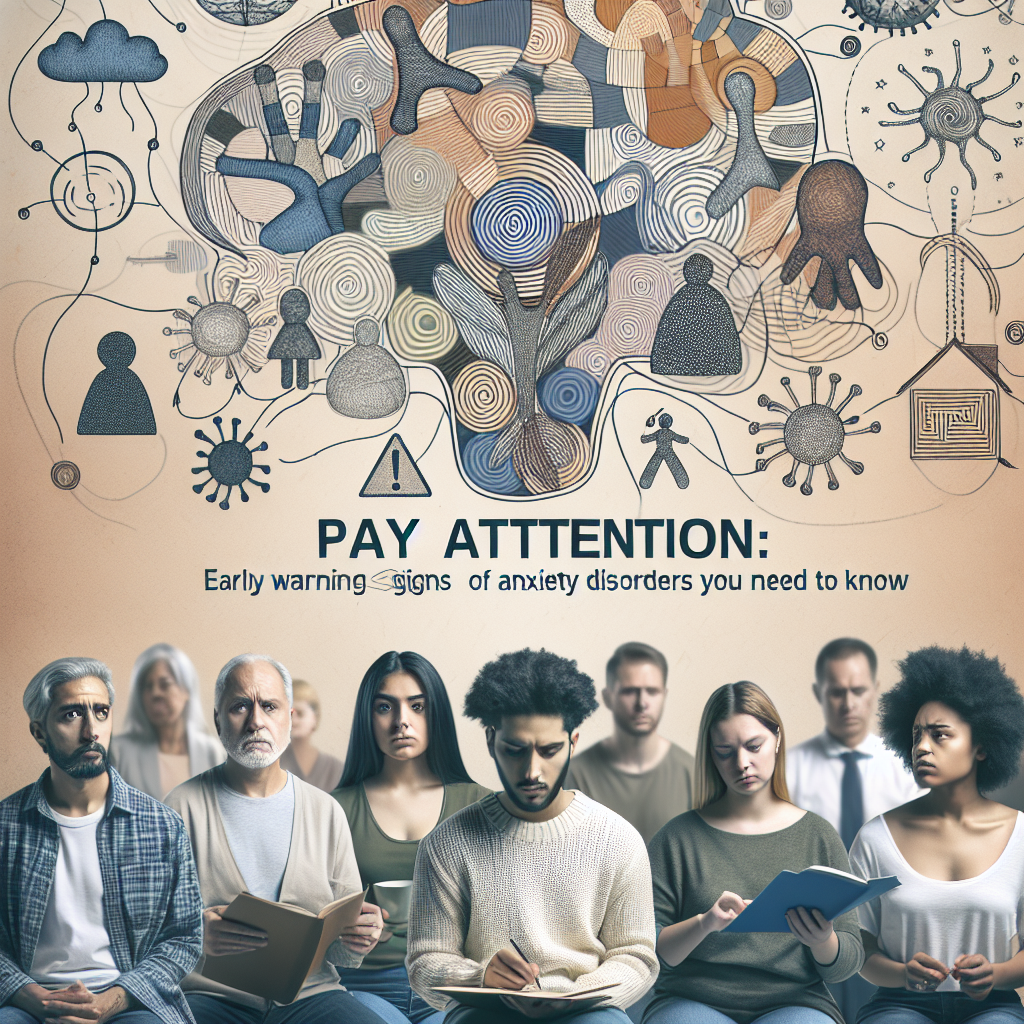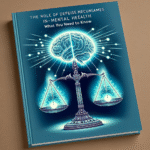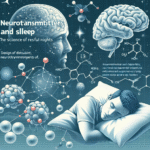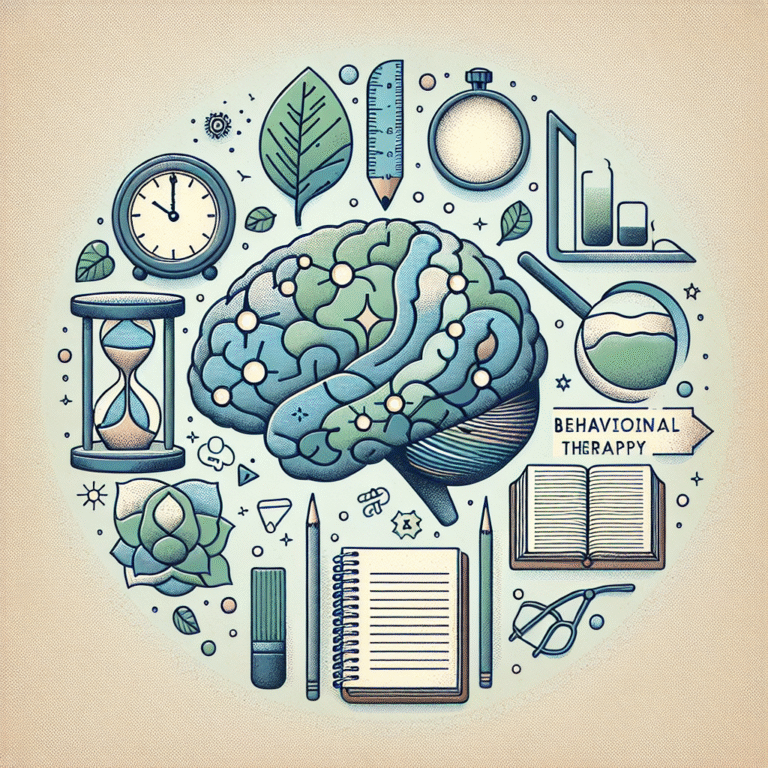
Pay Attention: Early Warning Signs of Anxiety Disorders You Need to Know
Introduction
In the fast-paced world we live in, anxiety disorders are more prevalent than ever, affecting millions of individuals. It’s vital to recognize that anxiety doesn’t always manifest in obvious ways; it sometimes presents as subtle signals that can easily be overlooked. In this article, we will delve into the early warning signs of anxiety disorders, giving you the tools to identify these indicators in yourself or in loved ones. As we explore these signs, we will emphasize the importance of paying attention to early symptoms—something that could lead to timely intervention and improved well-being.
Understanding Anxiety Disorders
Before we investigate specific early warning signs, let’s clarify what anxiety disorders entail. Anxiety disorders are a group of mental health conditions characterized by excessive fear or worry. They can range from generalized anxiety disorder (GAD) to panic disorders, social anxiety, and phobias. Understanding anxiety disorders helps underline the importance of recognizing early warning signs of anxiety disorders you need to know.
Types of Anxiety Disorders
- Generalized Anxiety Disorder (GAD): Persistent worrying about various aspects of life.
- Panic Disorder: Recurrent panic attacks and the fear of experiencing them again.
- Social Anxiety Disorder: Extreme fear of social interactions.
- Specific Phobias: An intense, irrational fear of specific objects or situations.
Recognizing the different types of anxiety disorders is a crucial step in understanding the early warning signs of anxiety disorders you need to know.
Early Warning Signs to Watch For
Paying attention to the signs of anxiety can lead to early intervention, which is essential for managing these disorders effectively. Below are the most significant early warning signs of anxiety disorders.
1. Excessive Worrying
Definition: Constantly ruminating about everyday problems can signal anxiety.
Example: Sarah, a college student, began worrying about her exams months in advance, losing sleep over each potential scenario. This excessive worrying affected her performance and social life.
Relevance: This case illustrates how chronic worry can overwhelm daily activities and indicate anxiety disorder. If you or someone you know is consumed by worry, it’s a sign to take action.
2. Physical Symptoms
Common Symptoms: Headaches, stomach issues, and elevated heart rate.
Example: Mark noticed consistent stomach issues that seemed to flare up before big presentations at work. After consulting a healthcare professional, he realized these symptoms stemmed from anxiety.
| Symptom | Description |
|---|---|
| Headaches | Often tension-related, manifesting during stress. |
| Gastrointestinal | Can lead to nausea or bloating during anxiety. |
Relevance: Physical manifestations can be some of the strongest indicators of anxiety disorders, reminding us to pay attention to our body’s signals.
3. Sleep Disturbances
Symptoms: Insomnia, restless sleep, or excessive sleeping.
Example: Jane, a new mother, found herself unable to sleep, consumed by worries about her baby’s health. This ongoing issue, without any physical reasons, represented a clear warning sign of an anxiety disorder.
Relevance: Sleep is intimately connected to mental health; disturbances should not be brushed aside but rather examined closely.
4. Avoidance Behavior
Definition: Steering clear of situations that trigger discomfort.
Example: Tom used to enjoy social gatherings but slowly began to avoid them due to overwhelming feelings of anxiety. This avoidance led to isolation and further exacerbated his symptoms.
Relevance: Recognizing and addressing avoidance behavior can break the cycle of anxiety, encouraging individuals to confront rather than evade their fears.
5. Irritability and Mood Swings
Symptoms: Increased fussiness, emotional volatility, or a short temper.
Example: Lisa, a normally cheerful person, began erupting in anger over minor inconveniences. Her friends recognized this mood shift as an alarming sign.
Relevance: Mood fluctuations can affect relationships and daily functioning, providing a crucial opportunity for reflection and intervention.
Case Studies: Real-World Applications
Case Study 1: Sarah and the Power of Awareness
Sarah was a competitive swimmer who noticed that intense training sessions would often lead her to suffer from anxiety, particularly during competitions. After recognizing her patterns—like excessive worrying and physical symptoms like a racing heart—she sought therapy. With the help of a counselor, she learned coping mechanisms that allowed her to address her anxiety positively.
Analysis
Sarah’s journey exemplifies how awareness of early warning signs of anxiety disorders can prompt individuals to seek help. Early recognition paved the way for effective management strategies.
Case Study 2: Mark’s Journey to Recovery
Mark, dealing with work-related stress, found himself performing poorly due to persistent worry and physical symptoms like headaches. By paying attention to these early signs and making a timely appointment with a psychologist, he learned how to manage his anxiety through lifestyle changes and cognitive behavioral therapy.
Analysis
Mark’s proactive approach showcases the importance of addressing concerns as they arise. His recovery was largely due to recognizing the early warning signs of anxiety disorders you need to know.
Statistical Overview
To further illuminate the impact of anxiety disorders, consider the following statistics:
| Statistic | Value |
|---|---|
| Prevalence of Anxiety Disorders in Adults | 19.1% of U.S. adults have experienced an anxiety disorder in the last year. |
| Average Age of Onset | 11 years old |
| Percentage Seeking Treatment | Only 36.9% of those with anxiety disorders seek treatment. |
These statistics underscore the importance of recognizing early warning signs and the need for timely intervention.
Conclusion
Recognizing and understanding the early warning signs of anxiety disorders you need to know is vital for taking proactive steps toward mental well-being. Whether it’s excessive worrying, physical symptoms, or behavioral changes, tuning into these signals not only helps create awareness but also fosters a supportive environment for those battling anxiety disorders.
By paying attention to signs of anxiety, you enable timely interventions that can significantly alter outcomes. Remember: the sooner you identify the problem, the sooner you can seek help and potentially reclaim your life.
FAQs
1. What are the most common types of anxiety disorders?
The most common types include Generalized Anxiety Disorder (GAD), Panic Disorder, Social Anxiety Disorder, and Specific Phobias.
2. How can I differentiate between normal stress and an anxiety disorder?
Normal stress is typically temporary and manageable, whereas anxiety disorders manifest through persistent symptoms interfering with daily life.
3. What should I do if I notice these early warning signs?
Consider seeking advice from a healthcare professional. Early intervention can lead to better outcomes.
4. Are there natural remedies for anxiety?
Yes! Many individuals find success with exercise, meditation, breathing exercises, or herbal supplements. However, it’s advisable to consult a doctor first.
5. Can children also show early signs of anxiety disorders?
Absolutely. Children can experience anxiety disorders, and early recognition can set the foundation for effective management as they grow.
By being aware of the early warning signs of anxiety disorders you need to know, you’re empowering yourself and others to take action that can lead to improved mental health and overall happiness. Let’s continue to create a culture where mental health is prioritized, and everyone feels supported on their journey.

















